Many men use testosterone replacement therapy (TRT) to improve energy, mood, and muscle strength. However, for men who plan a vasectomy reversal, continuing testosterone can dramatically reduce the chance of success.
Here’s why understanding the connection between testosterone and sperm production is essential before surgery.
🔹 What Testosterone Normally Does in the Body
Your body’s sperm production depends on a precise hormonal communication between the brain and the testicles:
1. The hypothalamus releases a hormone called GnRH.
2. The pituitary gland then sends two messenger hormones:
LH (luteinizing hormone) – signals the testicles to make testosterone locally.
FSH (follicle-stimulating hormone) – helps mature sperm cells.
3. These signals keep intratesticular testosterone levels extremely high—many times higher than what is measured in the bloodstream—allowing sperm to form and mature properly.
🔹 What Happens When You Use Testosterone from Outside
When you take testosterone injections, gels, or pellets, your body senses that your hormone levels are already high.
In response, the brain shuts down its own signal to the testicles:
↓ GnRH
↓ LH and FSH
↓ Intratesticular testosterone
❌ Sperm production stops
Even though you may feel stronger or more energetic, your testicles are essentially “switched off.”
Many men on TRT develop severely low sperm counts or even azoospermia (no sperm at all).
🔹 Why This Matters for Vasectomy Reversal
A vasectomy reversal reconnects the tubes that carry sperm.
However, if no sperm are being made, even the best surgical technique cannot restore fertility.
Therefore, men must stop testosterone therapy well before their reversal surgery to allow sperm production to restart naturally.
🔹 How Long Does It Take to Recover Sperm Production?
The recovery timeline varies based on your age, how long you’ve been on TRT, and the dosage used. It could take 3–6 months for sperm production to return after stopping testosterone. Up to 12 months for full recovery in long-term users.
🔹 Steps to Take Before Vasectomy Reversal
1. Stop all testosterone or anabolic steroid use as soon as you plan to do vasectomy reversal. Ideally, at least 3–6 months before the procedure.
2. During this time, your hormone doctor may prescribe medications such as:
a. Clomiphene citrate (Clomid) – helps the pituitary restart natural hormone signals.
b. hCG (human chorionic gonadotropin) – mimics LH to stimulate testosterone production in the testicles.
Both can help “wake up” sperm production faster.
🔹 The Bottom Line
Exogenous testosterone can make you feel good—but it can also make you temporarily infertile. If you’re planning a vasectomy reversal, restoring natural hormone balance first is essential.
By discontinuing TRT, monitoring your hormones, and allowing sperm production to recover, you maximize your chance for success—and for a healthy pregnancy after reversal.
Steven Shu, MD, MBA
Medical Director, One Stop Medical Center | Procedure Clinic
Specializing in office-based vasectomy and vasectomy reversal procedures with local anesthesia.
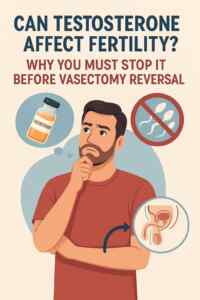
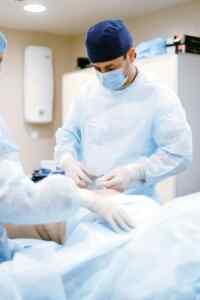


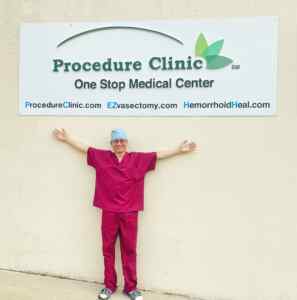


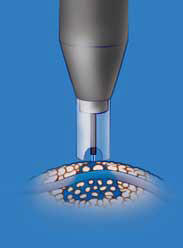


 The fear of increasing one’s risk of prostate cancer has stopped some men from undergoing a
The fear of increasing one’s risk of prostate cancer has stopped some men from undergoing a  If you’re looking for a natural, inexpensive way of boosting sperm quality and overall fertility, the answer may lie within…tomatoes?
If you’re looking for a natural, inexpensive way of boosting sperm quality and overall fertility, the answer may lie within…tomatoes? From self-order kiosks to robot vacuum cleaners and robot cafes, the rise of robot-assisted experiences in recent years has been undeniable. But would you ever consider participating in a robot-assisted surgical procedure?
From self-order kiosks to robot vacuum cleaners and robot cafes, the rise of robot-assisted experiences in recent years has been undeniable. But would you ever consider participating in a robot-assisted surgical procedure?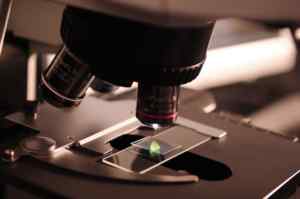 However, costs aside, it’s still noteworthy to highlight the reliability and effectiveness of robot-assisted vasectomy reversals.
However, costs aside, it’s still noteworthy to highlight the reliability and effectiveness of robot-assisted vasectomy reversals.  1. Walnuts
1. Walnuts 5. Dark Chocolate
5. Dark Chocolate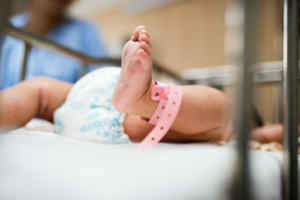 In a landmark study from the Vasovasostomy Study Group (VVSG) published in 1991, Dr. Arnold Belker and four other expert microsurgeons examined various facets of vasectomy reversal, including the risk of birth defects. Their trial, which followed 291 children born post-vasectomy reversal, found that only three of the 291 subjects displayed birth defects. That’s a one percent birth defect rate.
In a landmark study from the Vasovasostomy Study Group (VVSG) published in 1991, Dr. Arnold Belker and four other expert microsurgeons examined various facets of vasectomy reversal, including the risk of birth defects. Their trial, which followed 291 children born post-vasectomy reversal, found that only three of the 291 subjects displayed birth defects. That’s a one percent birth defect rate.  You may be familiar with the term “antibodies” as “something that helps the body ward off disease,” but the notion of sperm antibodies might seem counterintuitive. After all, why would the body want to destroy perfectly good sperm?
You may be familiar with the term “antibodies” as “something that helps the body ward off disease,” but the notion of sperm antibodies might seem counterintuitive. After all, why would the body want to destroy perfectly good sperm? After undergoing a vasectomy reversal, patients can expect a recovery process similar to that of their original vasectomy. Pain and swelling in the groin is to be expected for about 1-3 weeks, but most patients are able to return to work and daily activities within one week. Below is a breakdown of what to expect for post-surgery care and recovery:
After undergoing a vasectomy reversal, patients can expect a recovery process similar to that of their original vasectomy. Pain and swelling in the groin is to be expected for about 1-3 weeks, but most patients are able to return to work and daily activities within one week. Below is a breakdown of what to expect for post-surgery care and recovery:
 Myth: In Vitro Fertilization (IVF) is quicker and easier than having a vasectomy reversal.
Myth: In Vitro Fertilization (IVF) is quicker and easier than having a vasectomy reversal. Myth: Couples should not try to conceive right after a vasectomy reversal for fear of a “leftover, defective sperm.”
Myth: Couples should not try to conceive right after a vasectomy reversal for fear of a “leftover, defective sperm.”
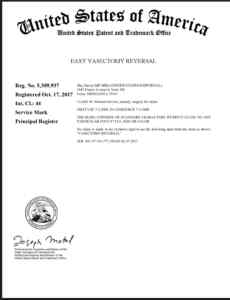
 At World Vasectomy Day, local Mexican and international doctors will provide free vasectomies, along with live-streamed interviews with family planning experts, patients, and their families. This will be Dr. Shu’s 5th year participating in the event, and the One Stop Medical Center will offer free large pizza.
At World Vasectomy Day, local Mexican and international doctors will provide free vasectomies, along with live-streamed interviews with family planning experts, patients, and their families. This will be Dr. Shu’s 5th year participating in the event, and the One Stop Medical Center will offer free large pizza.




